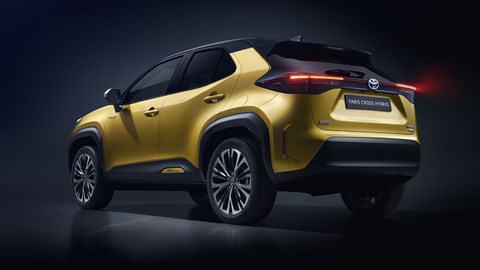► Toyota targets 3.5 million EV sales per year by 2030
► Plans to launch 30 new BEVs within the same period
► Lexus to be EV-only in Europe by the end of the decade
The 2023 Tokyo mobility show is just weeks away, and that means we’ll get a closer look at Toyota’s electric plans.
The manufacturer’s boss, Akio Toyoda, has already promised that buyers will have 30 Toyota electric cars to choose from by 2030. That figure includes the brand’s passenger and commercial vehicles, as well as premium offerings from Lexus. While the full picture is a while a way, Toyota will almost certainly reveal the latest iteration of its master plan at the upcoming show.
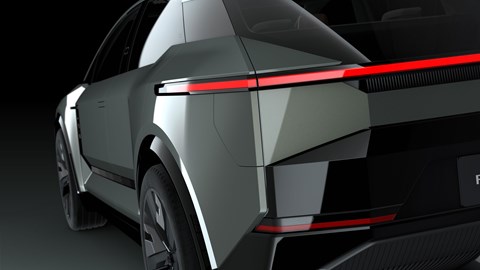
So what will we see in Tokyo?
Toyota has revealed two concepts so far, and both represent two bookends of the electric car: the FT-3e is an electric SUV that majors on practicality, while the FT-Se is an EV that’s had the Gazoo racing treatment. Both also aim to create an emotional response with people, with Toyota adding the theme of its Tokyo offering is ‘one-of-a-kind cherished vehicles.’ Through personalisation and bold styling, Toyota hopes to create emotive EVs.
FT-3e
What motor show stand would be complete without a forthcoming compact, electric SUV? To be fair on the FT-3e, the teasers (above and below) show an striking car, that is a strong upgrade on the somewhat forgettable looking bZ4X.
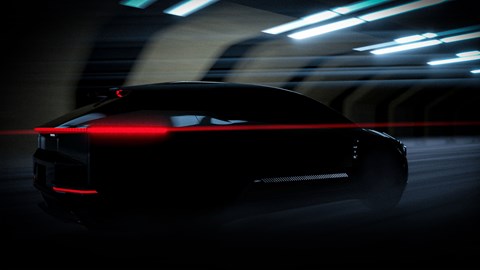
Blockier, more sophisticated and ‘as simple as possible,’ the FT-3e looks cool, but for real innovation you’ll need to look deeper than the bodywork. Toyota hints the FT-3e will include V2X technology, and will also feature a significant amount of personalisation inside, giving consumers a chance to create ‘their very own’ SUV.
FT-Se
Simply put, the FT-Se looks to be GR’s take on a full-electric vehicle. Although Toyota’s only release a two teasers so far, both show what we’d usually cool a mid-engined sports car – without the engine, obviously. Interestingly the FT-Se shares some powertrain components with the crossover above, highlighting just how much efficient EV-making can be – as well as the power of software.
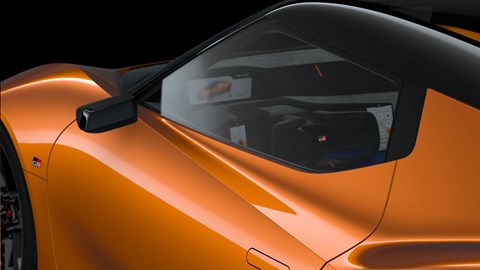
In addition to a similar level of customisation inside. Toyota says the FT-Se could continue to improve with OTR updates throughout its life, keeping it competitive for several years. We’ll find out more in the run up to Tokoyo/
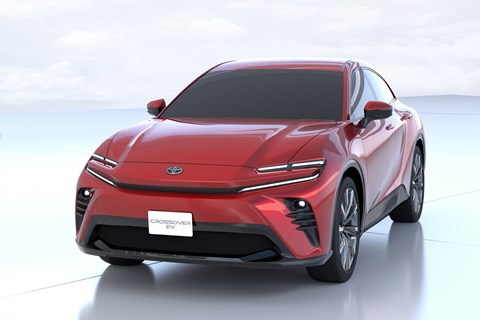
And how much money is this going to cost?
Toyota aims to sell 3.5 million BEVs per year by the end of the decade, which is around 1.5 million more than the company manages today. As a result, BEVs will also make up a larger percentage of the brand’s total 10 million yearly vehicle sales.
President Toyoda said his firm will plough 4 trillion yen (around £24 billion) into electric vehicles and next-generation batteries between now and 2030 – and that a similar sum will be dumped into hybrid, hydrogen and other powertrain technologies. He wants Toyota’s manufacturing plants to be completely carbon neutral by 2035, too.
‘We will continue to advance initiatives in all areas,’ he said. ‘Energy varies from region to region. Toyota is committed to producing a range of carbon-neutral options. Then our customers decide. A solution for the average person would not be the best solution for everyone.’
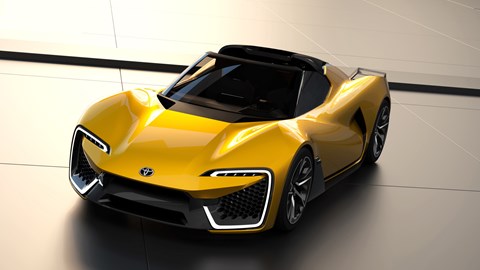
Design chief Simon Humphries added: ‘Our strength is understanding what customers really want. The biggest challenge is to increase customer acceptance of carbon neutrality.’
Akio Toyoda’s current stance on BEVs is surprising. He’s a keen race driver and has previously said that he was ‘not interested’ in electric cars. It seems his engineers have made enough progress to win him over, though, as he’s now changed his tune.
He said: ‘The [BEVs] we’re developing for the future I am interested in. We are now able to make a fun-to-drive car that you can drive safely. We are now at a point where a more safe and more fun-to-drive EV can be developed. It’s not any more just a business decision.’
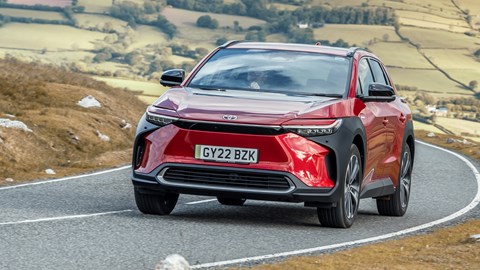
Toyota’s first electric car, the bZ4X (pictured above), is already on sale in the UK, offering a maximum range of 317 miles. It was co-developed with Subaru and has such spawned a badge-engineered variant from that brand called the Solterra, as well as a premium alternative from Lexus called the RZ450e.
These will be joined by an arsenal of Toyota-badged family cars, an electric Lexus sports car, a flagship Lexus electric SUV, an electric pickup and a mad supercar to rival the Lotus Evija. There are also plans for more utilitarian vehicles like the aptly named Micro Box and Mid Box – a pair of tiny electric commercial vehicles that look like wheeled Rubik’s Cubes.
How will Toyota power its new electric cars?
With batteries, of course. But Toyota is looking at ways of innovating in that area as well. In August 2022, Toyota took steps to secure its battery supply, spending around £4.5 billion on partnerships in Japan and the United States to increase its battery production capacity by investing in more efficient assembly lines and better workforce training. Toyota says its improved facilities in Himeji and North Carolina will start churning out batteries between 2024 and 2026.
Toyota is also working with Isuzu, Daihatsu and Isuzu on replaceable cartridge battery packs for its commercial vehicles. The system works on similar principles to Nio’s Power Swap Stations – empty batteries are replaced for fully charged ones at dedicated swap stations, dramatically reducing the amount of time drivers spend refuelling their electric cars.
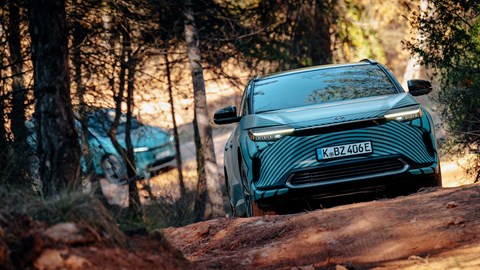
Toyota claims this method could reduce the cost of its BEVs, too. Because cartridge battery packs eliminate long recharge times, their capacity can be smaller – and that means the raw materials for the cells can be spread more thinly over more battery packs, giving the potential to power more electric cars with the same resources. It’s a clever bit of lateral thinking.
What about hydrogen fuel cells?
Toyota has dabbled with the hydrogen fuel cell since it launched the first-generation Mirai in 2014. Since then, the brand has done a lot to improve the technology – the company even showcased a portable hydrogen cartridge prototype (pictured below) in June 2022 that can power small-scale hydrogen fuel cells in everything from homes and appliances to motorbikes and cars.
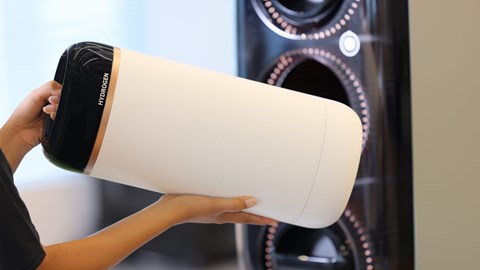
The idea is, rather than going to a filling station for hydrogen, you simply pick up a couple of cartridges and slot them into whatever you need to power. The cartridges are charged at a central location, thereby eliminating the need for a hydrogen infrastructure and they can be chained together to power more energy demanding items.
Toyota has refined the Mirai, too. The Mk2 model was launched in 2020 and, unlike the original car (which sold a measly 10,000 examples during its six years on sale), it was designed to sell. We’ve driven it – and we can confirm that it has a more luxurious cabin, a better chassis and a longer maximum range of 400 miles. The only thing holding it back is the pitiful hydrogen infrastructure.
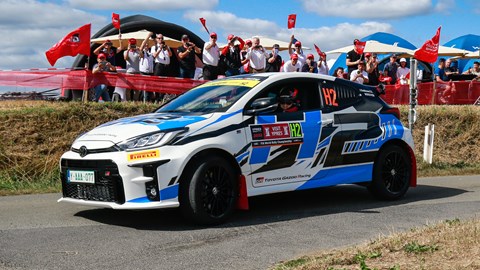
If that wasn’t enough, Toyota is also designing internal combustion engines that can run on pure hydrogen. The brand already has a prototype GR Yaris rally car (above), powered by a modified version of Toyota’s 1.6-litre three-cylinder petrol engine. It produces almost no tailpipe emissions (most of the gas coming out of the exhaust is water vapour), but it sounds and feels like a petrol car to drive.
Plug-in hybrid Toyotas
There have been two generations of Prius plug-in hybrid, which have now been joined by a PHEV version of the RAV4. Its powertrain comprises a 2.5-litre four-cylinder petrol engine, an electric motor and an enormous 18.1kWh battery pack – enough for a maximum electric range of 46 miles.
The extra electrification has made the RAV4 significantly quicker, too. Its PHEV powertrain produces 302bhp and can propel the SUV from 0–62 in 6.2 seconds which is bordering on hot hatch territory. Drive it like you’re not on the run from the law and Toyota says it’ll return more than 280mpg.
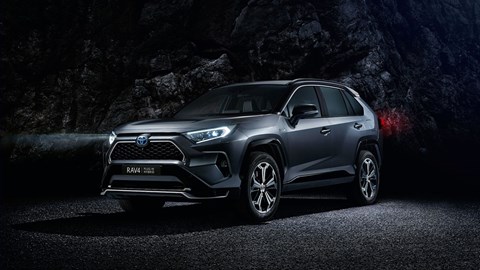
To mark it out as the range-topping plug-in model, the RAV4 PHEV gets a restyled nose, model-specific 19-inch alloy wheels, black leather upholstery and a nine-inch infotainment screen, which is the biggest fitted to any model in the RAV4 range.
Self-charging hybrid Toyotas
Those old things? Well, self-charging hybrids have been the bedrock of Toyota’s success since the first-generation Prius was launched in the late 1990s. They’re still selling well today, which means Toyota is continuing to evolve the technology.
The most recent addition to the company’s range was the Yaris Cross. Its hybrid system is based around a new 1.5-litre three-cylinder petrol unit, which can return up to 65.9mpg on the WLTP cycle with emissions as low as 120g/km of CO2. As an interesting side note, the three-pot’s thermal efficiency is a diesel-beating 40%.
